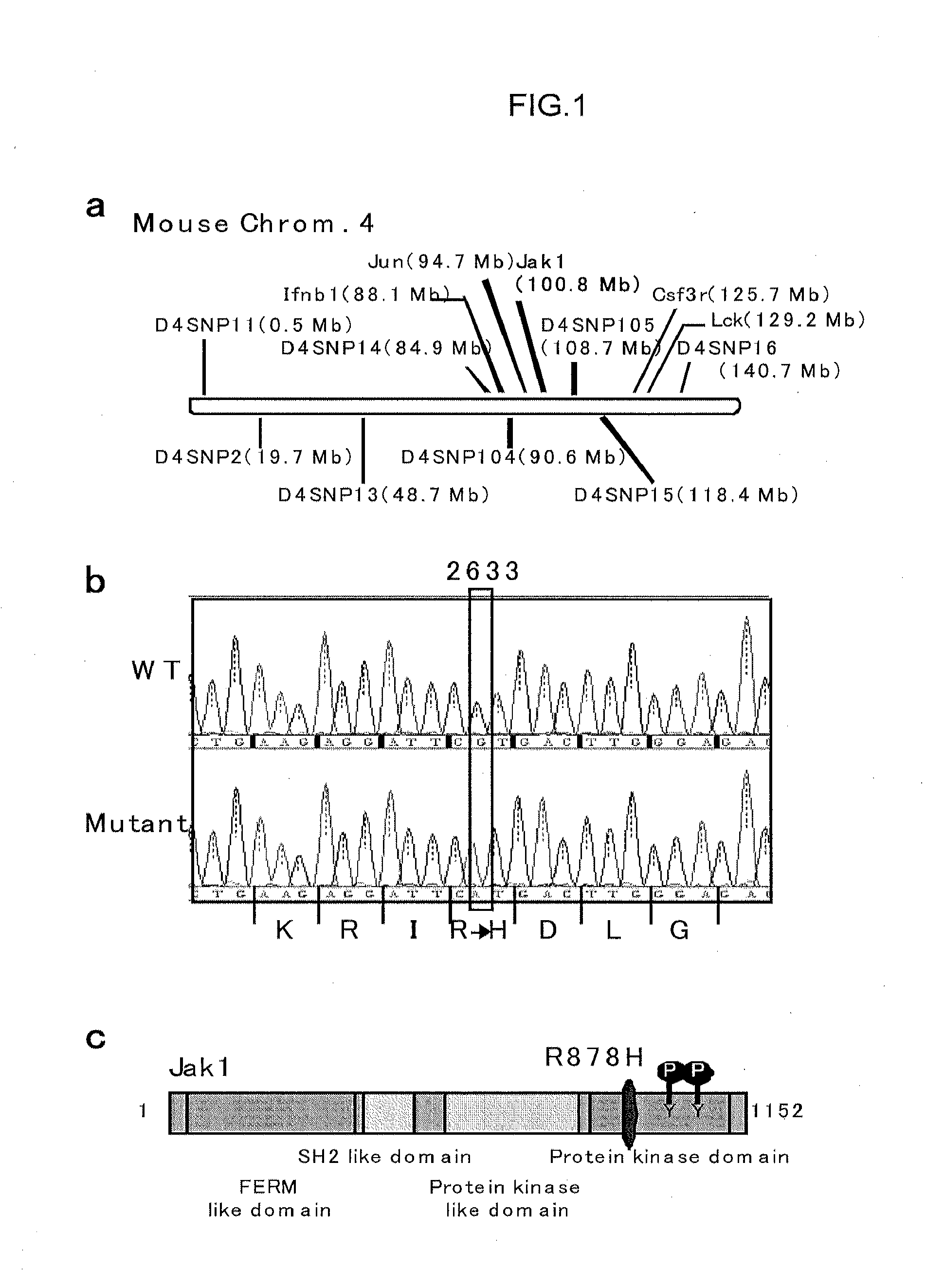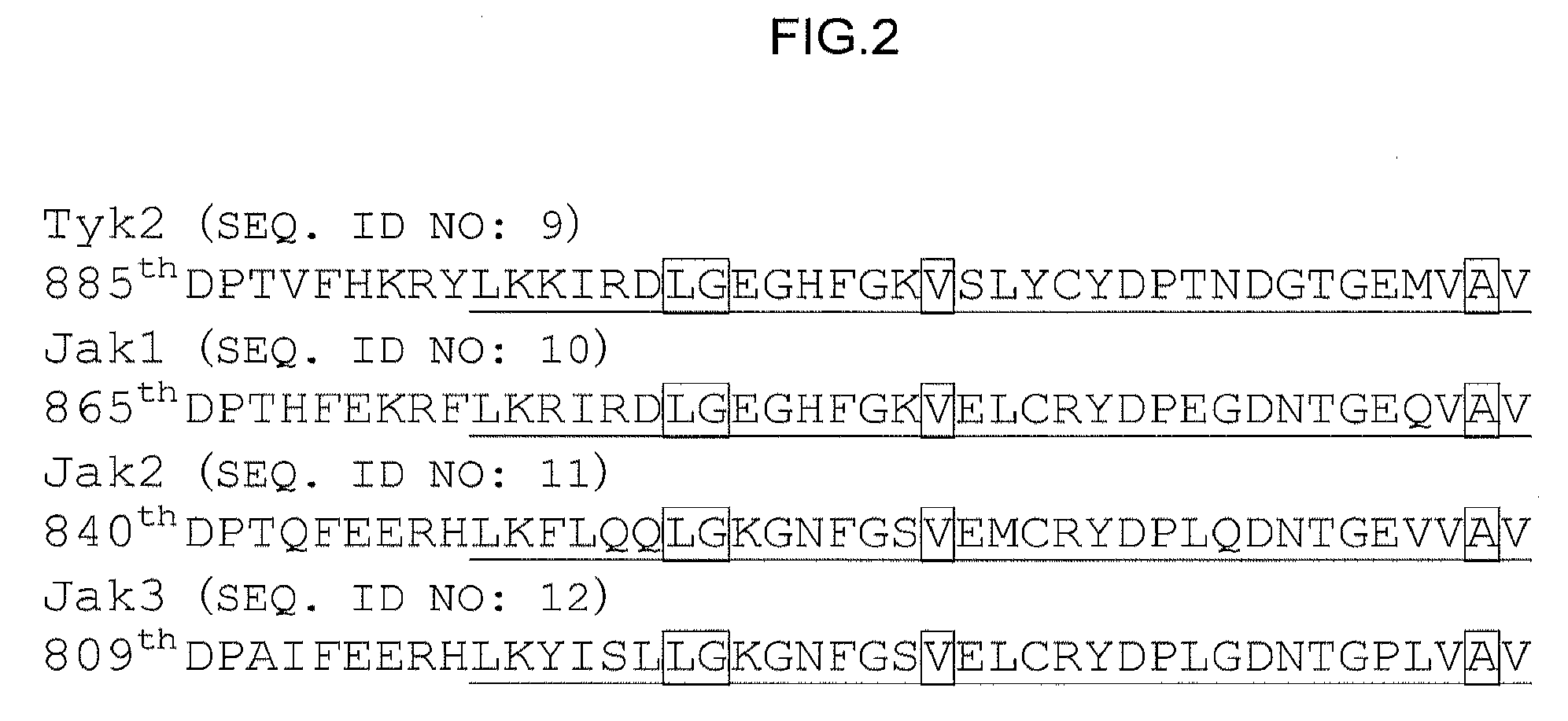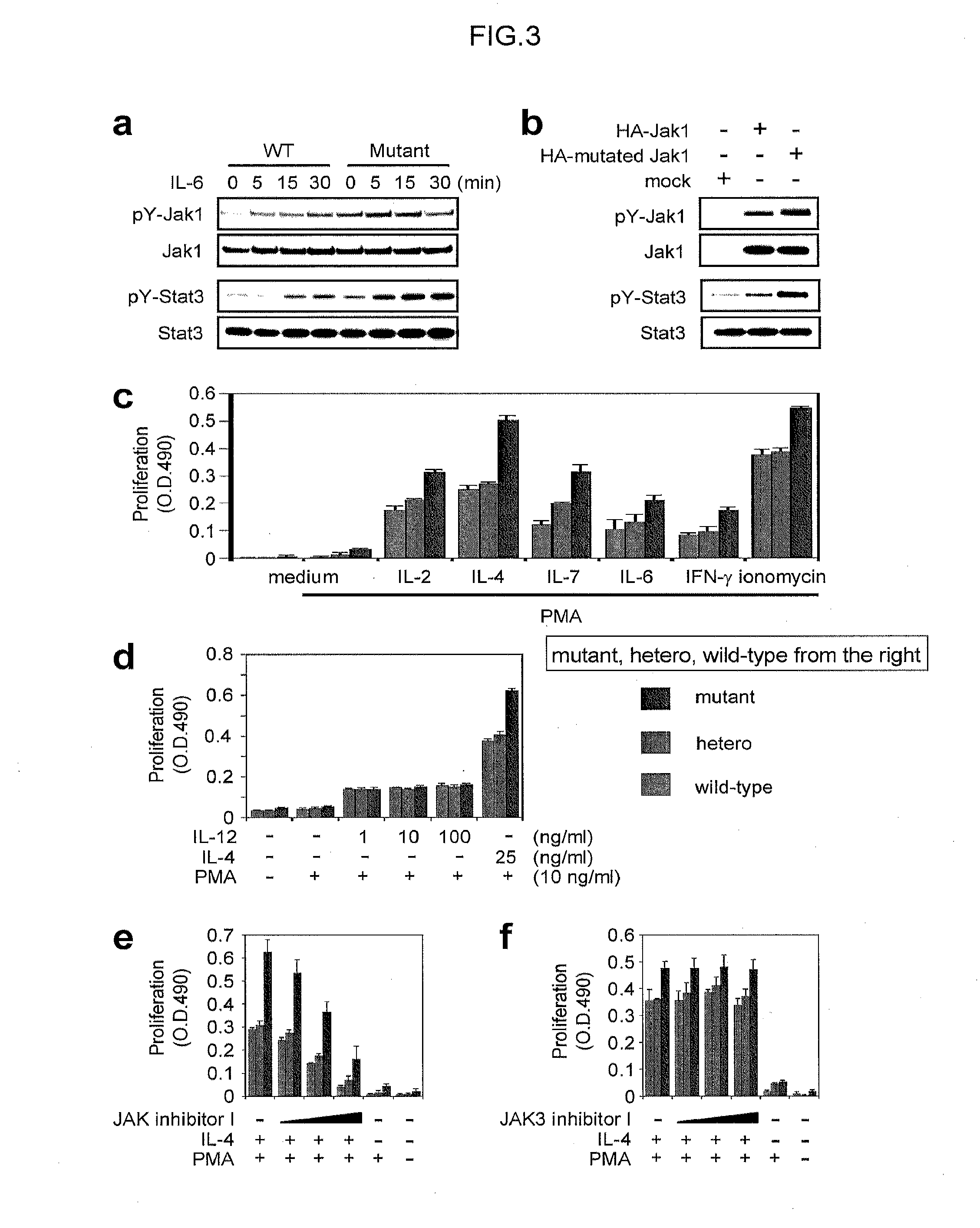Diagnostic method of skin inflammatory disease
a skin inflammatory disease and diagnostic method technology, applied in the field of skin inflammatory disease diagnostic method, can solve the problems of inability to diagnose and treat atopic dermatitis, no effective treatment is available in terms of safety, efficacy and psychological satisfaction, and many remains unclear about the mechanism behind the onset of the disease. to achieve the effect of diagnosing inflammatory skin diseases
- Summary
- Abstract
- Description
- Claims
- Application Information
AI Technical Summary
Benefits of technology
Problems solved by technology
Method used
Image
Examples
example 1
Identification of Mutation of the Causal Gene in Jak1 Tyrosine Kinase
[0176]The mouse model of atopic dermatitis generated as directed in the above section (Methods and Materials) was mated with a C3H / HeJ mouse, and a gene map was generated to identify the causal gene. Crossbreeding of a C3B6F1 heterozygote under SPF conditions resulted in the expression of the phenotype of dermatitis at a probability of ¼. Next, these two series were examined for phenotype transmission and the causal gene by gene mapping using SNP markers. As a result, the region that causes the illness was located in chromosome 4 (FIG. 1a). Chromosome 4 was divided, and some candidate genes were selected by PosMed search [Kobayashi N et al., Bioinformatics. 24:1002-10 (2008)]. A point mutation in the candidate gene Jak1 coding region was thus identified (FIG. 1b). This point mutation resulted in a change of the 878th arginine (R) located in the tyrosine kinase domain of Jak1 to histidine (H) (FIG. 1c). This mutatio...
example 2
Functional Accentuation of Jak1 by Point Mutation
[0180]While some reports are available on mice with a mutation of the Jak1 gene, symptoms like dermatitis have not been reported as such mutations cause perinatal death in knock-out mice [Rodig et al., Cell. 93:373-83. (1998)]. Therefore, this point mutation in the Jak1 gene is estimated to give rise to a certain specific function that will induce dermatitis, rather than to cause a function loss. The point mutation in the nucleotide induces a single-amino-acid substitution known as R878H, and this was observed in the vicinity of the ATP-binding consensus domain that begins at the 880th amino acid within the tyrosine kinase domain of the Jak1 molecule (http: / / www.ncbi.nlm.nih.gov / Structure / cdd / wrpsb.cgi?seqinput=NP—666257.2). The ATP-binding domain of tyrosine kinase is a sequence that is critical to the expression of tyrosine phosphorylation activity, and this consensus domain is conserved among the mouse and human Jak family proteins...
example 3
Influence of Jak1 Mutation on Excess Proliferation of Immunocytes
[0183]In mice with advanced dermatitis, the peripheral lymph nodes and spleen mostly hypertrophy, and the lymphocyte count increases. To examine the influence of Jak1 mutation on immunocyte proliferation, the in vitro proliferation potential of splenic CD4-positive T cells was compared between a mutant mouse (homozygote) and wild-type litter mates. Various cytokines that transmit their signals via Jak1 (e.g., IL-2, IL-4, IL-7, IL-6 and IFN-γ) induced excess proliferation of CD4-positive T cells derived from the mutant mouse (FIG. 3c); this excess proliferation was dose-dependently inhibited by the addition of the Jak inhibitor pyridone 6 (FIG. 3e), but not by the addition of the Jak3-specific inhibitor WHI-P131 (FIG. 3f). In contrast to these cytokines, when CD4-positive T cells were stimulated with IL-12 (which transmits a signal via Jak2, rather than via Jak1), no remarkable difference in cell proliferation was noted...
PUM
| Property | Measurement | Unit |
|---|---|---|
| molecular weights | aaaaa | aaaaa |
| density | aaaaa | aaaaa |
| density | aaaaa | aaaaa |
Abstract
Description
Claims
Application Information
 Login to View More
Login to View More - R&D
- Intellectual Property
- Life Sciences
- Materials
- Tech Scout
- Unparalleled Data Quality
- Higher Quality Content
- 60% Fewer Hallucinations
Browse by: Latest US Patents, China's latest patents, Technical Efficacy Thesaurus, Application Domain, Technology Topic, Popular Technical Reports.
© 2025 PatSnap. All rights reserved.Legal|Privacy policy|Modern Slavery Act Transparency Statement|Sitemap|About US| Contact US: help@patsnap.com



